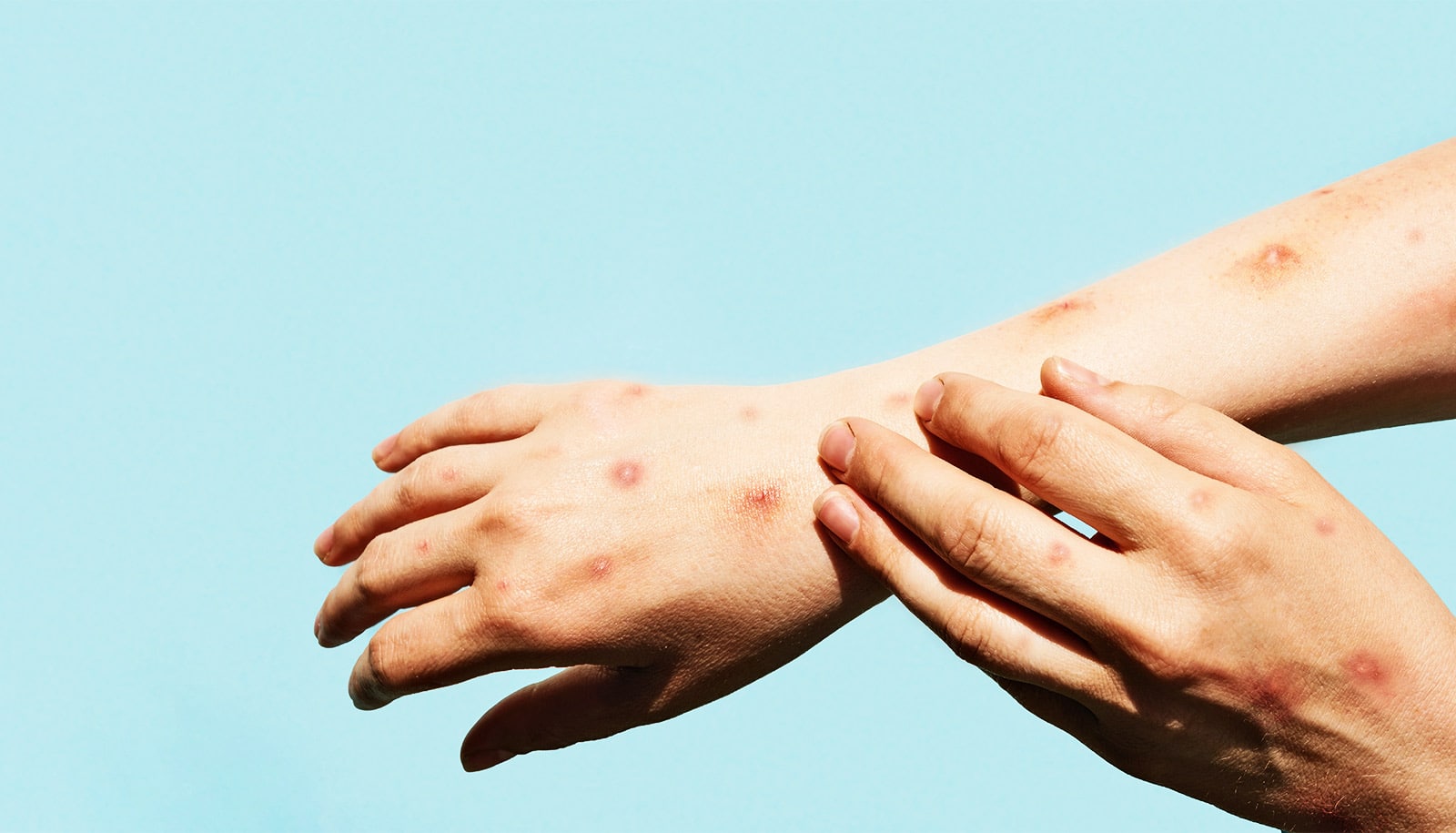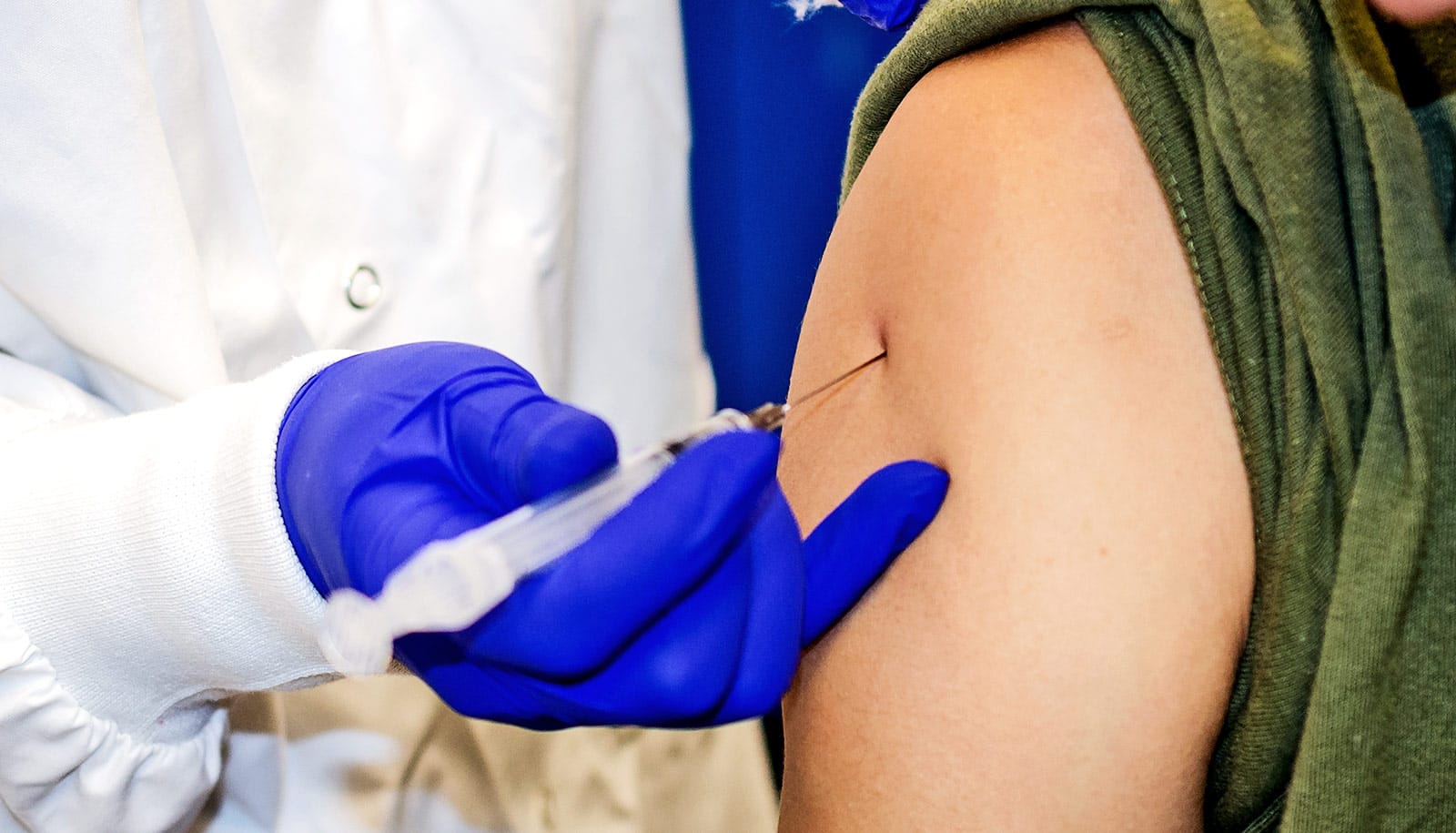A newly developed molecule could serve as a potential treatment for the varicella zoster virus, the type of herpes that causes both chickenpox and shingles.
According to a new study, published in the Journal of Medicinal Chemistry, the molecule can effectively treat the uncomfortable lesions that accompany shingles and suggests the molecule may also work against the viruses that cause oral and genital herpes.
“Many viruses are becoming drug-resistant to the current medications on the market,” says lead author Uma Singh, a lecturer in the College of Pharmacy at the University of Georgia. “There is a continuous need for new molecules, and the one we developed, called POM-L-BHDU, shows much more potency against the virus than current ones.”
The researchers also found that the molecule is safe for treating varicella zoster virus in cancer patients. Additionally, the molecule can be applied topically in addition to being taken orally or intravenously, making it a great option for a future cream-based medication for both shingles and other herpes outbreaks.
While several drugs are on the market to treat the viruses caused by the varicella zoster virus, they aren’t particularly effective or can have potentially life-threatening side effects.
For example, cidofovir is an antiviral commonly used for viral eye infections and used off-label to treat warts and herpes. But it can accumulate in the kidneys and potentially cause them to fail in severe cases.
A topical medication using the patented molecule can better target localized outbreaks, preventing the virus from spreading to other areas of the body. Topical medications also limit the amount of a drug that is absorbed into the bloodstream and cut down significantly on side effects.
But the new molecule isn’t just for topical treatments.
“We want to develop this as a broad-spectrum molecule,” Singh says. “It acts against both the varicella zoster virus and herpes simplex 1 and 2 viruses. For patients who want to take it in capsules, they could. Those who want to take it intravenously, they could. And those who want to use it topically, they can easily apply it at home.”
The researchers hope the topical formula will be sold over the counter, enabling patients to easily access treatment in the privacy of their own homes without needing a prescription.
The molecule has already proven effective in vitro and in vivo mouse models.
Topical studies on adult human skin indicate that POM-L-BHDU, 0.2% formulated in cocoa butter is highly effective against both herpes simplex 1 and the varicella zoster viruses. (These results are currently unpublished.)
The next step is to get the molecule into phase 1 clinical trials, something Singh hopes will happen in the next couple of years.
“We want to push this project as soon as possible into large-scale synthesis,” Singh says. “It has the potential to benefit society on a large scale.”
Additional coauthors are from State University of New York Upstate Medical University and the University of Georgia.
Recently, the UGA Research Foundation has licensed this molecule to a company called Anterogen Co.
Source: University of Georgia


